Fall Lawn Maintenance
By Misty Kuceris, Horticulturalist ©2019
Fall in Northern Virginia is the most important time to take care of your lawn since the majority of homes have cool season grasses. That means your lawn is either tall fescue, or a combination of tall fescue, Kentucky bluegrass, and perennial ryegrass. (For those of you who have a warm season grass, such as zoysiagrass, I’ll be writing a blog on lawn care for your lawn in spring when that starts the season for its care.)
When you think of lawn care, there are three basic components to consider:
- Testing your soil,
- Preparing your soil, and
- Improving your lawn.
Testing your soil is important because the best pH level for grass seed to flourish is around 6.2. This means that you want your soil to be more on the alkaline side rather than the acidic side. In general, soil tends to be more acidic east of the Mississippi River and more alkaline west of the Mississippi River.
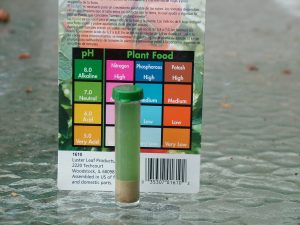 Here in Northern Virginia with all our clay, the soil tends to be very acidic. Not good for the lawn. When your pH is below 6.0, you need to add lime.
Here in Northern Virginia with all our clay, the soil tends to be very acidic. Not good for the lawn. When your pH is below 6.0, you need to add lime.
The home soil test kits are easy to use. Just follow the label instructions and you get a vial which shows you the pH of your lawn soil. In the case of the soil test I took, you’ll see that the pH is around 7.0 which means I won’t need to add lime to my lawn this year.
Every three or four years, have your soil tested by Virginia Tech. This gives you more comprehensive information. While the test does cost a modest fee, much of that money is returned to the local county’s Cooperative Education Program for use in the county.
In the Virginia Tech results report, you not only get information on your pH, but you also get information on other minerals which you need in the soil to promote good grass growth. Just follow the instructions found on the form and mail in the soil test.
If you look at the results listed in the soil report shown, you’ll see that the pH is 7.3 which means no lime is recommended. You’ll also see that the trace minerals, such as Mg (Magnesium) and Fe (Iron) are more than sufficient. Knowing this information will enable you to purchase the right lawn fertilizer.
Preparing the soil is the next step you need to take. Aerate your soil at least every other year. This is important to loosen the soil and make certain that your soil “percolates.” Percolation means that when it rains or you water your lawn, the water will penetrate the top layer of the soil. In one yard that I recently evaluated, it had just rained but I was unable to put the trowel more than one inch into the soil. It was as if I was trying to put a trowel into concrete.
After you aerate, apply lime, if necessary. In the two soil test samples which I wrote about, the pH was above 7.0 and the lawns didn’t need any lime. However, this is not usually the case in Northern Virginia. Most lawns do need a lime application.
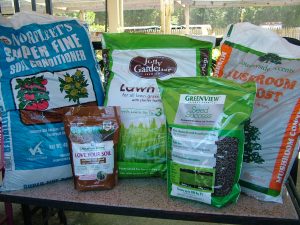 When you’ve aerated and applied the lime, walk around the property and look for any bare spots. Use a tool to loosen the soil in those areas down to three inches at a minimum. Grass needs to have three inches of loose soil so their roots can establish. Use compost to mix into those areas. You can use your own compost created from grass clippings, branches, and other organic matter. Or, you can purchase compost, such as leaf humus, mushroom compost, or other forms of organic matter.
When you’ve aerated and applied the lime, walk around the property and look for any bare spots. Use a tool to loosen the soil in those areas down to three inches at a minimum. Grass needs to have three inches of loose soil so their roots can establish. Use compost to mix into those areas. You can use your own compost created from grass clippings, branches, and other organic matter. Or, you can purchase compost, such as leaf humus, mushroom compost, or other forms of organic matter.
I did receive two questions regarding the use of fallen leaves as a soil amendment. One came from Richard: There are leaves in the wooded areas of our properties: Should I rake them and haul them away? Is there an easy way to turn dried leaves into mulch or leaven the where they are? The other came from Christine: What is the best use of fallen leaves in the yard? Do they need to be composted before being used as a natural mulch?
According to the Penn State Extension office, the leaves of one large shade tree can be worth as much as $50 of plant food and humus. When composted, the leaves contain calcium, magnesium, nitrogen and phosphorus, plus other trace elements.
If you don’t want to compost your leaves, you can still use them if you shred them with your lawn mower. Just never use whole leaves because they can become infested with a fungal infection before they can decompose.
Another question regarding natural compost comes from Susan. After I mow my lawn, should I leave grass clippings in the lawn?
Grass clippings provide a lot of nitrogen to your lawn which the grass appreciates. But only leave the grass clippings behind if you haven’t used any weed killer or weed pre-emergent. If you use those chemicals, the grass clippings will not be effective.
Just follow these basic rules if you’re going to use your grass clippings:
- Cut the grass at the recommended height which is to 3 inches for cool season grasses,
- Mow when the grass is dry,
- Make certain that you have a sharp mower blade, and
- Remove no more than one-third of the blade.
At this point, you’ve done what you can do to improve the soil in your lawn. Now you’re ready to put down the seed and fertilize the lawn.
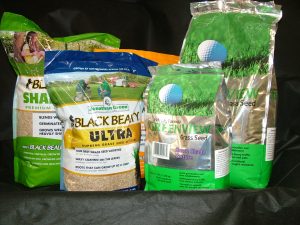 You have several options for grass seed in general. You can either go with a tall fescue blend, which means that all the seeds are a form of fescue. When you go with a fescue blend, the lawn looks the same. Or, you can go with a fescue mixture which means that the seed is a form of fescue, perennial rye grass, and Kentucky bluegrass. This gives you’re lawn a sense of movement because the blades are different sizes. If you have a lot of foot traffic, such as children playing in the lawn, you may want to consider the fescue blend.
You have several options for grass seed in general. You can either go with a tall fescue blend, which means that all the seeds are a form of fescue. When you go with a fescue blend, the lawn looks the same. Or, you can go with a fescue mixture which means that the seed is a form of fescue, perennial rye grass, and Kentucky bluegrass. This gives you’re lawn a sense of movement because the blades are different sizes. If you have a lot of foot traffic, such as children playing in the lawn, you may want to consider the fescue blend.
The lighting in your yard will also dictate the type of seed you want to purchase. There are seeds for sun, partial shade, dappled shade, and dense shade. Sunny locations get at least six hours of afternoon sun while dense shade locations are often found under the trees.
After you apply the seed, it’s time to fertilize.
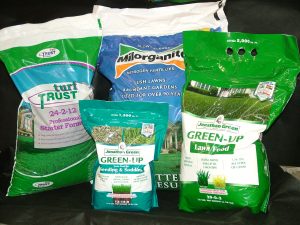 It’s best to apply fall lawn fertilizer twice: around September and again around November. If you’re overseeding, you want to use a starter lawn fertilizer the first time and a regular lawn fertilizer the second time. If you’re not overseeding, apply one of the regular lawn fertilizer depending on your need for micronutrients, such as iron.
It’s best to apply fall lawn fertilizer twice: around September and again around November. If you’re overseeding, you want to use a starter lawn fertilizer the first time and a regular lawn fertilizer the second time. If you’re not overseeding, apply one of the regular lawn fertilizer depending on your need for micronutrients, such as iron.
The reason that you want to use a starter lawn fertilizer when you overseeding is that it contains phosphorous (the second number on the label) which increases the strength of the seed to grow its roots.
Always use a spreader to place seed and fertilizer. This assures that both are spread evenly and not in clumps which could cause problems.
After you’ve applied the seed and fertilizer, water. All seed needs watering to sprout. What you want to do is water your new seed twice a day and just long enough to keep it moist. If the day is particularly dry, you may need to water three times a day. Once the grass starts growing, you water your lawn once a week to a one-inch depth. The best way to measure that depth is to take a cup with a one-inch measurement and put it out when the sprinkler is releasing water. Once the cup is full to one-inch, you know that you’ve watered enough.
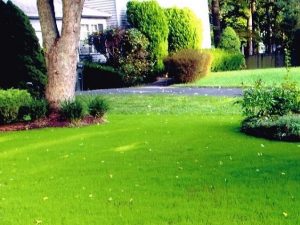 The final step is to mow your lawn properly. Cool season grasses like to be no more than three inches tall. When the grass is four inches tall, you mow it back down to three inches.
The final step is to mow your lawn properly. Cool season grasses like to be no more than three inches tall. When the grass is four inches tall, you mow it back down to three inches.
By taking care of your lawn needs, especially seeding or overseeding, in the fall, you’ll find that you have a wonderful lawn with fewer weeds and increased root structure.
You can now watch Misty’s television show, Gardening with Burke Nursery, which airs on Fairfax Public Access. This program is underwritten by Burke Nursery and Garden Centre. You can also view the programs on YouTube, Gardening with Burke Nursery.


![pumpkin[1]](/wp-content/uploads/2013/03/pumpkin1.png)
![197454109[1]](/wp-content/uploads/2013/03/1974541091.png)



Leave a Reply